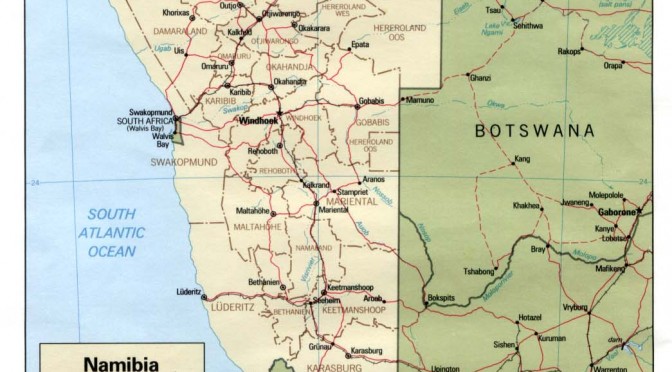Namibia’s Ministry of Mines and Energy (MME), recently called for a pre-feasibility study for a pilot concentrated solar power plant in Namibia, which was funded by the Energy and Environment Partnership (EEP).
The project aims at increasing the share of renewable energies in the Namibian energy mix by developing the necessary technological framework and conditions for the successful transfer and deployment of concentrated solar power (CSP) technology for on-grid power generation.
Namibia faces a capacity deficit in its electricity generation capacity from 2015 due to current growth forecasts of its electricity demands. Some of its energy import agreements are also about to end. The 150 MW contract with Zimbabwe will terminate in 2014 and the 50 MW with Zambia will be in force until 2020 only. Besides, due to strong growth forecasts in the Southern African Development Community region, energy exports from South Africa may be reduced. To fill the forecasted capacity gap, some countries of the region, like Tanzania are already making short term investments in with rental diesel power generation plants. The electricity from such plants, however, are costly both financially (~USD 0.50/kWh for fuel costs) and environmentally (emissions of 1.02 tonnes CO2/MWh). In light of this crisis Namibia is urgently looking at a number of alternative investment scenarios to increase the nation’s generation capacity, with CSP featuring prominently as an option.
CSP technology is mostly confined to a few players in the world in Germany, Israel, Italy, Spain, United States of America and other developed countries with active applied research. To overcome the barriers of CSP development in Namibia and pave the way for investments in CSP plants in the future, the project will include three components:
- CSP Investment Partnerships in Namibia: the project will facilitate the finalization of a number of CSP partnerships agreements between local and foreign firms to facilitate technology transfer and develop capacity building programs to support the various stakeholders;
- Policy Frameworks for CSP Initiatives in Namibia: the project will (i) help draft the technical regulations promoting development of CSP plants in Namibia, (ii) prepare detailed information of the most promising CSP sites, and (iii) support the development of ground level solar irradiation information at potential CSP project sites;
- Facilitation of the first CSP plant in Namibia: the project will (i) produce a full feasibility study of selected CSP sites along with their environmental impact assessment, (ii) finalize institutional, financial and business arrangements for initial CSP plant development, and (iii) aim at having a signed engineering-procure-construct contract and commencement of CSP construction.
The project proposed has two important differences with the initial PIF approved in June 2010:
- The size of the CSP plant considered is much bigger (switch from an initial 5 MW demonstration CSP plant to the construction and commissioning of a 50 MW commercial CSP plant);
- The potential leverage impact on investment is also much bigger. The co-financing ratio appears smaller compared to the PIF because the pledged resources from MME and DBSA to finance the capital costs of a larger plant are now classified as ‘leveraged resources’ since it will only be realized subject to successful outcomes of activities supported during the 1st year of the project. It is nevertheless fully expected that the leveraged resources will be successfully realized by the end of the 1st year.
The direct post-project GHG emissions savings due to the associated investments over 10 years will range from 4.79 million tCO2 eq (with energy storage) to 2.40 million tCO2 eq (without storage). With a GEF investment of $1,718,000, the cost of avoided CO2 emissions from the project under the base case scenario will be about $0.36 /tCO2 eq avoided.
The co-financing comes from the government ($420,000), the development Bank of Southern Africa ($350,000) and the Clinton Climate Initiative ($100,000). The leveraged resources ($300 million) would come from the government of Namibia and the development Bank of Southern Africa.
https://s3.amazonaws.com/csptoday/Namibia_csp_pres.pdf
http://www.sasec.org.za/presentations/concentrating_solar_power_sessions/CSP8_ppt.pdf
http://www.reeei.org.na/cps/cps_/120725_Presentation_CSPNamibia_SIJ_Part2.pdf



